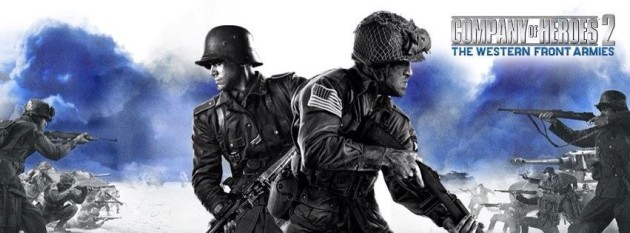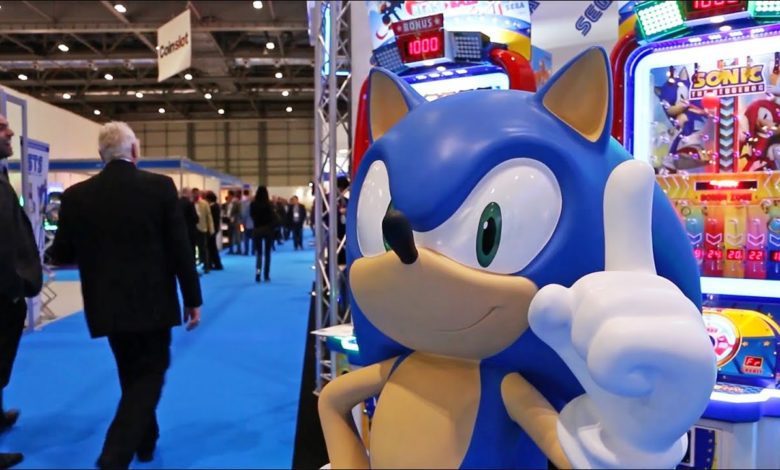
Retrospective: Relic Entertainment
Relic Entertainment, one of SEGA’s recent acquisitions from the new defunct THQ, has already cemented itself as a great addition to the list of development studios owned by our favourite gaming company, with the great success of Company of Heroes 2.
But where did it all start? In this retrospective, we hope to take you (the sexy readers) on Relic’s journey to join the list of great SEGA studios.
Humble beginnings
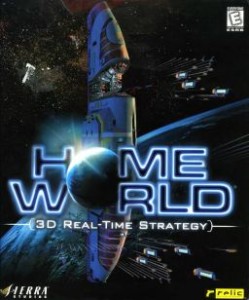 With $5,000 in their hands, Alex Garden and Luke Moloney founded Relic in May 1997 and soon set up their office in a small 3,000 square foot building resting atop a bar in Vancouver, Canada, where they had 16 employees.
With $5,000 in their hands, Alex Garden and Luke Moloney founded Relic in May 1997 and soon set up their office in a small 3,000 square foot building resting atop a bar in Vancouver, Canada, where they had 16 employees.
Relic quickly secured a publishing deal with Sierra On-Line to bring Homeworld to PCs. Two years later, in September 1999, Relic released Homeworld to critical acclaim and commercial success, partly due to it being classified as the ‘first fully 3D real-time strategy game.’ It was due to its space theme that allowed the game to make full use of the 3D technology at the time, with ships being able to travel in any direction.
Eurogamer rated the game a 90 and said, “the visuals are beautiful, the soundtrack atmospheric, the single player campaign (mostly) engaging, and the multiplayer is excellent. It’s only really let down by suspect AI and a few tedious missions.”
It was also different than most RTS titles at the time, due to the game’s ‘persistent fleet’ concept. Rather than starting new missions with set resources and units, the game carried over any ships and resources gained from the previous mission – meaning that players would need to ensure their units were safe by the end of each mission to be sure to succeed by the end of the game.
But, despite the game’s success, Relic didn’t work on the franchise again until 2003. Sierra Entertainment (formerly Sierra On-Line), the game’s publisher and owner of the Homeworld licence (at the time), chose Barking Dog Studios to develop the next installment, Homeworld: Cataclysm – which was originally planned as an expansion, but then released as a stand-alone spin-off title. Like the original Homeworld, Cataclysm was met with great critical success.
The next game Relic developed was Impossible Creatures, published by Microsoft Game Studios and released December 2002 for PC. It was another real-time strategy title, but its unique feature this time was that all the battle units in the game were created by the player.
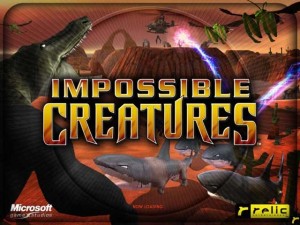 Players built armies by combining creatures from a list of 76. The animals possessed inherent abilities and part of the key to success was to exploit these traits to gain a strategic advantage in the game. Generally, the game was well received and successful financially, but it did not garner the same attention of critical praise that Homeworld achieved.
Players built armies by combining creatures from a list of 76. The animals possessed inherent abilities and part of the key to success was to exploit these traits to gain a strategic advantage in the game. Generally, the game was well received and successful financially, but it did not garner the same attention of critical praise that Homeworld achieved.
GameSpy, which rated the game a 72, said, “What’s truly surprising, given how atmospheric Relic’s Homeworld was, is just how lame the story and ambience of Impossible Creatures turned out to be.”
Nearly a year later, in September 2003, Sierra put Relic back in the development driver’s seat and released Homeworld 2, with the game boasting enhanced visuals, improvements to the gameplay and a better distinction between the different faction’s ships. But, while Homeworld 2 was well received, the reviews didn’t score it as favourably as the original title, and its average Metacritic score is an 83 compared to Homeworld’s 93 score.
Despite rumors of them continuing work on the IP, Homeworld 2 is still the last game in the franchise that Relic worked on.
Changing the game
In May 2004, Relic was purchased by THQ for approximately $10 million. This was broken down into $547,000 in tangible assets, $1.3 million in intangible assets, and $8.85 million in goodwill. THQ also assumed $517,000 in debt that Relic carried, according to GameSpot.
“As an independent company, Relic was forced to constantly keep its best employees in a split-focus mode where we observed the market and the synergies between other publishers along with our own products,” Garden told GameSpot shortly after the acquisition. “An acquisition by THQ brings together the best of both worlds. Now we have the benefit of internal exposure to the great planning resources at THQ, and we can devote our best talent internally to the goal of making great games.”
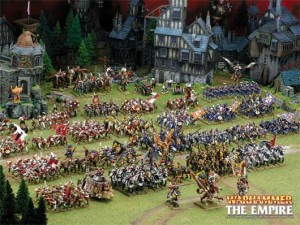
With the Homeworld IP owned by Sierra/Vivendi at the time, it looked as though Relic would never come close to touching the franchise again. Moving on from its past, Relic began work on the Warhammer franchise, based on Games Workshop’s popular Warhammer table-top game, and in September 2004, the company released Warhammer 40,000: Dawn of War. Not surprisingly, it was a real-time strategy game.
Dawn of War turned out to be quite the success for the company, receiving high critical acclaim and very respectable sales figures; to date the game has sold more than 7 million copies worldwide – and while that may not be Call of Duty or Mario Kart territory, that’s still a huge amount in the grand scheme of things, especially for an RTS title.
Running with the game’s success, Relic released an expansion pack Dawn of War: Winter Assault in September 2005. It was reasonably successful but did not make the same impact the main game had.
Stepping out of the comfort zone …
In 2006, Relic embarked on its very first console jaunt with the Xbox 360-exclusive title, The Outfit. As well as being its first console game, it was also Relic’s first step away from the RTS genre, being a squad-based action game set during World War II and based on a plot to assassinate Hitler.
“We’ve used elements of history to fuel an over-the-top script. So while the Hitler assassination plot really did happen, some of the plot elements in our story that surround it are of course fictional,” the game’s producer Alex Cook told Worthplaying.com. “We’ve tried to take the coolest aspects of history and ignore the boring parts.”
Though truth be told, it wasn’t too big a step away from the company’s RTS roots; the game still had an emphasis on strategy, choosing a leader and controlling squads of soldiers on missions. During gameplay players also earned ‘Field Units’ which were points that could be used to order in reinforcements and equipment, like tanks, weapon upgrades and airstrikes – making it feel very much like a RTS gameplay element.Unfortunately, the game didn’t receive the praise of Relic’s previous games. While The Outfit was applauded for its fully destructible environments, high draw distance and rather unique gameplay – reviewers criticised it for the graphical detail (the high draw distance leading to lower texture count and more basic-looking objects) and because the gameplay still seemed rooted in the RTS genre, some critics felt that the gameplay wasn’t open enough, with linear mission and level structures, similar to many RTS titles.
The single player and co-op modes were also criticised for the game’s subpar AI, but the online multiplayer did receive more praise. According to VGChartz.com, The Outfit managed to sell a paltry 240,000 worldwide.
… And back in again
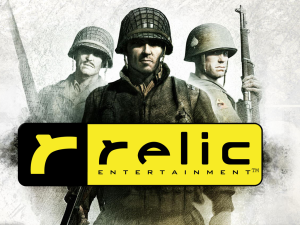 Heading back to its RTS roots, it was in 2006 that Relic released the franchise that it probably best known for, Company of Heroes, (in case you didn’t know) a World War II-themed strategy game for the PC.
Heading back to its RTS roots, it was in 2006 that Relic released the franchise that it probably best known for, Company of Heroes, (in case you didn’t know) a World War II-themed strategy game for the PC.
Around this time, Relic ballooned to nearly 200 employees and moved its offices to a large office tower in downtown Vancouver, with its PC teams operating on the 15th floor and The Outfit team on the 16th.
Using Relic’s own Essence Engine and the Havok physics engine, Company of Heroes became hugely successful, receiving review scores of 9/10 and 10/10 across the board, as well as winning multiple awards from magazines and websites and, to date, has sold more than 4 million copies worldwide.
A few months after Company of Heroes launched, Relic released a second, standalone expansion for Dawn of War, Warhammer 40,000: Dawn of War – Dark Crusade. It brought new races, new units and a new turn-based campaign to the game and received high praise for being one of the best expansions released that year.
In September 2007, a stand-alone expansion for Company of Heroes was released, Opposing Fronts, introducing two new playable armies and mechanical tweaks.
Don’t tease me baby
Homeworld fans were teased with the potential for a sequel to the franchise in November 2007, when Sierra/Vivendi confirmed that THQ had acquired the license, meaning that Relic’s parent company was free to use the license as it wished.
“We’re really happy the IP has made its way home, and yeah, we’re definitely looking at it. We’ll see what happens in the future,” Dawn of War II lead designer Jonny Ebbert told Eurogamer.
At that point, it almost seemed certain that Relic would continue work on a new Homeworld game, especially after reports came about in 2008 and later in 2011 that Relic was interested in working on Homeworld 3, but there were never any official announcements made by either Relic or THQ.
All about the War… hammer
Rather than going back to the Homeworld franchise, in 2009 Relic, focused on the two IPs it had been working on, with an expansion for Company of Heroes called Tales of Valor and a sequel to Dawn of War, Warhammer 40,000: Dawn of War II. Dawn of War II was treated to two expansion packs, Chaos Rising in 2010 and Retribution in 2011.
In September 2011, Relic stepped away from its RTS roots completely with the release of Warhammer 40,000: Space Marine – a third person shooter for the PC, PS3, Xbox 360 and later released on the OnLive cloud gaming service.
Arguably (by me) the game was criminally under-appreciated by the gaming public. While it received generally decent scores and a positive response from review sites and players alike, but the game didn’t sell as well as hoped.
One of the biggest issues for the game was some similarities to the more successful Gears of War franchise. For those who played the game, you can instantly tell that the gameplay was different to that of Gears of War and the storyline was hugely engaging, with a rich backstory, interesting characters, fantastic script and some incredible set pieces for the levels.However, the third-person shooting element and that one of the melee weapons players could use was a chainsword (basically a sword and chainsaw combined), gave the impression of a more Gears of War-clone, rather than a stand up title in its own right.
Due to the poor sales, a sequel never emerged, though it was reported that THQ did have plans for two more games in the Space Marine series. Outside of that, the Warhammer 40,000 franchise has continued but not in the third-person action shooter genre.
Part of the reason why those sequels for Space Marine never merged could be due to THQ’s financial problems and in Decemeber 2012 THQ filed for bankruptcy and auctioned off its assets.
Enter the Hedgehog
This is where SEGA stepped in, and by January 2013, it was announced that SEGA had bought Relic Entertainment from THQ for $26.6 million.
Unfortunately for fans of Homeworld and Relic, SEGA was unable to acquire the rights to the Homeworld franchise at the same time, as THQ auctioned off IP as a separate asset, with Gearbox Software placing the winning bid. Because of that, it looks as though Relic won’t be working on a new Homeworld game, the franchise that launched the developer and helped make it a success, anytime soon.
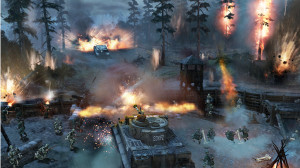 But even with its first game released under SEGA, Relic doesn’t look like any of these changes in management have affected the developer, and in June 2013, SEGA and Relic released Company of Heroes 2, which received generally high scores across the board and sold pretty well.
But even with its first game released under SEGA, Relic doesn’t look like any of these changes in management have affected the developer, and in June 2013, SEGA and Relic released Company of Heroes 2, which received generally high scores across the board and sold pretty well.
Though Company of Heroes’ release wasn’t without its problems. Aside from delays due to the THQ bankruptcy, after its release, the game started to receive adverse feedback from Russian press, with many stating that the game was portraying the Soviet army in a negative light.
The bad press in Russia led to a protest ‘review bomb’ – where reviewers posted negative reviews to lower the game’s Metacritic score. And one of the game’s distributors in Russia, 1C-Softclub, decided to stop issuing the game in July 2013.
Following the controversy SEGA issued a statement, saying that the company was “taking this issue very seriously and are investing these concerns thoroughly with all relevant partners.”
But the controversy in Eastern Europe hasn’t put a dampener on things for Relic or SEGA and since the game’s release, Relic has pushed out 20 updates for the title, which includes the standard bug updates, but also additional content and features. Compare that to the original Company of Heroes which, to date, has only had eight updates over the years and you can see that Relic is serious about the game.
So serious that with Company of Heroes 2 set to have its first proper expansion pack, The Western Front Armies, released later this month, (June 24th) the game’s director, Quinn Duffy, recently spoke to Eurogamer and explained that Relic had a five-year plan for the game.
The Western Front Armies, which Relic has been working on since June 2013 adds two new armies, the U.S. forces and the German Oberkommando West, eight new maps and new strategies. And Relic hopes to continue with more updates and expansions in the coming years, as Quinn Duffy explained: “We’re planning for things, and then we look at what our community is saying, we look at what our metrics are telling us, and that helps inform our plan. Prioritisation changes. We might pull something forward we thought we would do six months from now, and we do it now instead.
“It’s a road map, but it’s flexible. We need to be flexible as a company, as a team and as a business to react to the changes in the landscape, and be able to adapt our business, from a business level and even down to a design level and how we build the game.
“It’s very exciting to look at it this way and have a sense of what you want to do, and some items on the list you want to cross off. It gets the team behind it. They’re excited about upcoming plans and content.
“There’s a lot coming…”
And that’s exactly what we hope will happen from the relationship between SEGA and Relic: a lot more to come.
Relic has proven itself to be a worthy developer over the years and the launch of Company of Heroes 2 under SEGA goes to show that, despite having its parent company suddenly changed, the team can still deliver the goods.
On a completely personal level, I would literally wet my pants and wear them with pride if SEGA announced that it had secured to rights to make the planned sequels to Warhammer 40k: Space Marine and handed the development back to Relic, because that’s a franchise that definitely deserves some more love.


